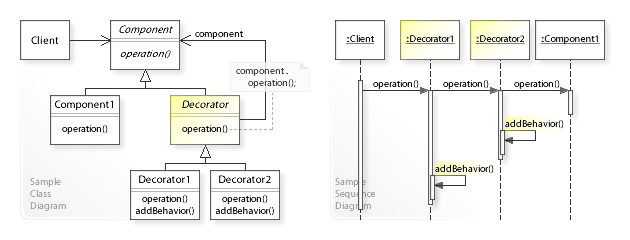I had some engaging conversation with my co-worker and we've discussed the "proper way" of Decorator Pattern usage. Unfortunately I couldn't find any confirmation of my assumptions and it's the reason of how my question have begotten.
Let see:
- If we have
HandlerInterfaceand alsoHandlerImplandDecoratorImplwhich both implements that interface, it's a decorator pattern? - But if our
HandlerInterfacecontains many methods, and we want to decorate only some methods, we could use alsoAbstractDecoratorwhich implementsHandlerInterfacecontract and some of its methods by default? - But what if we have only one implementation of
HandlerInterface? May it become redundant in some use cases? Which could mean, we don't need an interface only for this and we could just replace usages ofHandlerInterfacewithHandlerImpl?. - And then our
AbstractDecoratorwill not implementHandlerInterfacebut extendHandlerImplinstead. And if we would've done this. Why couldn't we just removeAbstractDecoratorand useHandlerImpldirectly in ourDecoratorImplas a contract? Maybe it's a bit far from the standard design, but as I understand, It's still a decorator pattern but after some modifications.
So, Is it a good way of thinking? Or maybe I'm missing something? Let me know. Thanks in advance.


